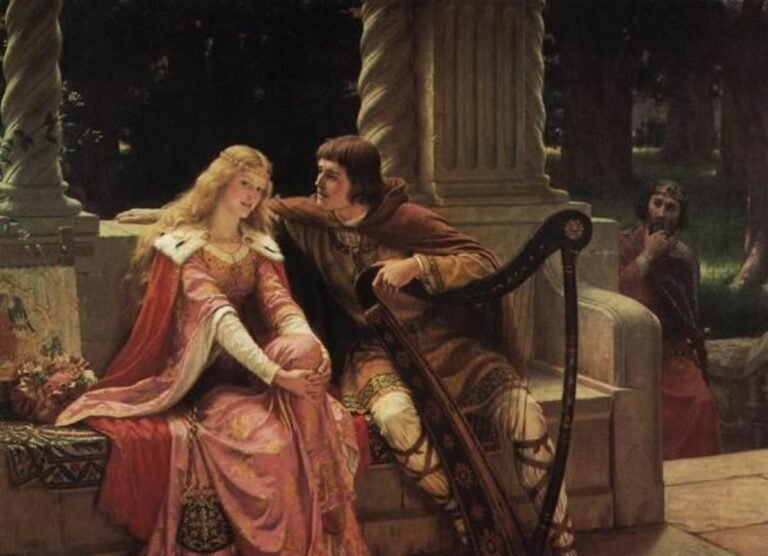Introduction
Love is a powerful force capable of inspiring great beauty and profound suffering. When true affection collides with societal restrictions or cultural taboos, it often transforms into a narrative of heartbreak and tragedy. These stories of forbidden love romantic entanglements deemed off-limits resonate deeply across generations, cultures, and mediums, revealing much about human nature and the forces that govern it.
What Constitutes a “Forbidden Love”?
At its core, a forbidden-love tragedy stems from affection that clashes with external forces: social class divisions, religious boundaries, family mandates, or rigid conventions. The threat is real—social exclusion, legal penalties, or even fatal consequences may await passionate souls who dare to defy the rules. This tension—between the lovers’ devotion and society’s prohibitions—is what elevates these stories from mere romance to enduring tragedy.
Historical Origins & Mythological Roots
The idea of forbidden lovers is ancient one of the earliest such myths originates in Babylon:
-
Pyramus and Thisbe: Told by Ovid in Metamorphoses, these star-crossed lovers whisper through a crack in their shared wall. A tragic misunderstanding Thisbe fleeing a lioness leads Pyramus to take his own life. When Thisbe discovers him, she dies by suicide too, and the gods transform mulberries red to honor their doomed romance.
-
Tristan and Isolde: A staple of medieval European legend, this Cornish knight and Irish princess succumb to a love steeped in enchantment and defiance ultimately doomed by political alliance and betrayal.
Iconic Literary Examples
-
Romeo and Juliet: Shakespeare’s timeless play portrays two young lovers whose love is suffocated by an ancient feud. Miscommunication, haste, and hatred lead to both their deaths.making it the archetype of tragic romance.
-
Laila and Majnun: A classic from Persian and Arabic lore, Qays (Majnun) and Laila’s devotion drives him to madness when their families forbid their union. Their love remains unfulfilled, immortalized in poetry and art across the Middle East and South Asia.
-
Heathcliff and Catherine (Wuthering Heights): Emily Brontë’s novel explores destructive passion and societal constraints: Heathcliff, an outsider, and Catherine, raised in privilege, are torn apart when Catherine chooses status over love destroying them both in life, and only finding peace in death.
Cultural Variations & Local Perspectives
While Western and Middle Eastern tales of forbidden love are widely known, regional folklore also carries powerful narratives:
-
Noori and Jam Tamachi: A 15th-century Sindhi folktale, part of Sindh’s “Seven Queens” literary tradition, tells of Prince Jam Tamachi elevating the humble fisherwoman Noori above all his royal consorts. Though their love overcame social expectations, the narrative is one of fulfilled devotion not tragedy. Still, it reflects a rich cultural approach to love overcoming hierarchical barriers.
Why Forbidden Love Captivates Us
Forbidden love stories endure because they tap into universal human experiences:
-
The tension between personal desire and cultural norms.
-
The emotional intensity of love found in adversity.
-
Deep empathy for lovers who risk everything for each other.
-
A lasting reminder: when society restricts love, tragedy may follow.
Modern-Day Interpretations & Media
Today, forbidden romance evolves but persists think of relationships across racial, religious, or sexual identity divides. Film and TV continue to mine this rich vein:
-
Stories that highlight systemic prejudice or social intolerance like interracial or LGBTQ+ relationships extend the classic narrative of forbidden love into contemporary relevance.
-
Unlike past tales, some modern narratives offer redemption or societal change, offering hope that love might win after all.
Real-Life Lessons & Sociological Impact
-
Social norms evolve many forms of once-taboo love are now widely accepted (e.g., interfaith or interracial unions in many places).
-
Experts in psychology point to forbidden-love stories as tools for exploring cognitive dissonance, cultural empathy, and emotional resilience.
Pros & Cons of Forbidden Relationships
| Pros | Cons |
|---|---|
| Heightened emotional intensity | Emotional distress and secrecy |
| Cultural critique and empathy | Risk of ostracism, legal or physical danger |
| Artistic and philosophical symbolism | Potential for tragic outcomes |
How Storytellers Can Use Forbidden Love
-
Step-by-step guide for writers:
-
Define societal boundary or taboo.
-
Create characters whose motivations and backgrounds evoke empathy.
-
Introduce escalating tension social judgment, threats, internal conflict.
-
Build to an emotional climax that tests both character and ideology.
-
Choose a resolution tragic sacrifice, transformative reconciliation, or hopeful defiance.
-
FAQs
(To appear again later in full FAQs section.)
Conclusion
Forbidden love whether legendary, literary, or modern holds a mirror to society: reflecting how rules, norms, and prejudices shape the most human of emotions. These tragic tales endure not just because of their heartbreak, but because they challenge us to ask: when love breaks the rules, is it doomed? Or is it stronger than the barriers erected against it?
FAQs Section
Q1: What makes a forbidden love story tragic?
Tragic outcomes often arise from lovers encountering insurmountable barriers be they legal, familial, cultural, or moral leading to heartbreak, sacrifice, or even death.
Q2: Why do such stories endure across cultures and time?
Because they illuminate timeless truths: the power of love, the cruelty of prejudice, and the universal struggle between individual desires and societal expectations.
Q3: Can forbidden love have a happy ending?
Yes while many classic tales end tragically, contemporary narratives sometimes allow forbidden lovers to triumph, signaling social progress or personal courage.
Q4: How can modern writers adapt the theme?
Use current social taboos such as religious differences, LGBTQ+ discrimination, or class divides as the dramatic tension, and consider resolutions that reflect today’s shifting norms.
Q5: Are real-life forbidden love stories educational?
Absolutely these stories offer profound insights into empathy, resilience, social change, and the importance of challenging unjust boundaries.
